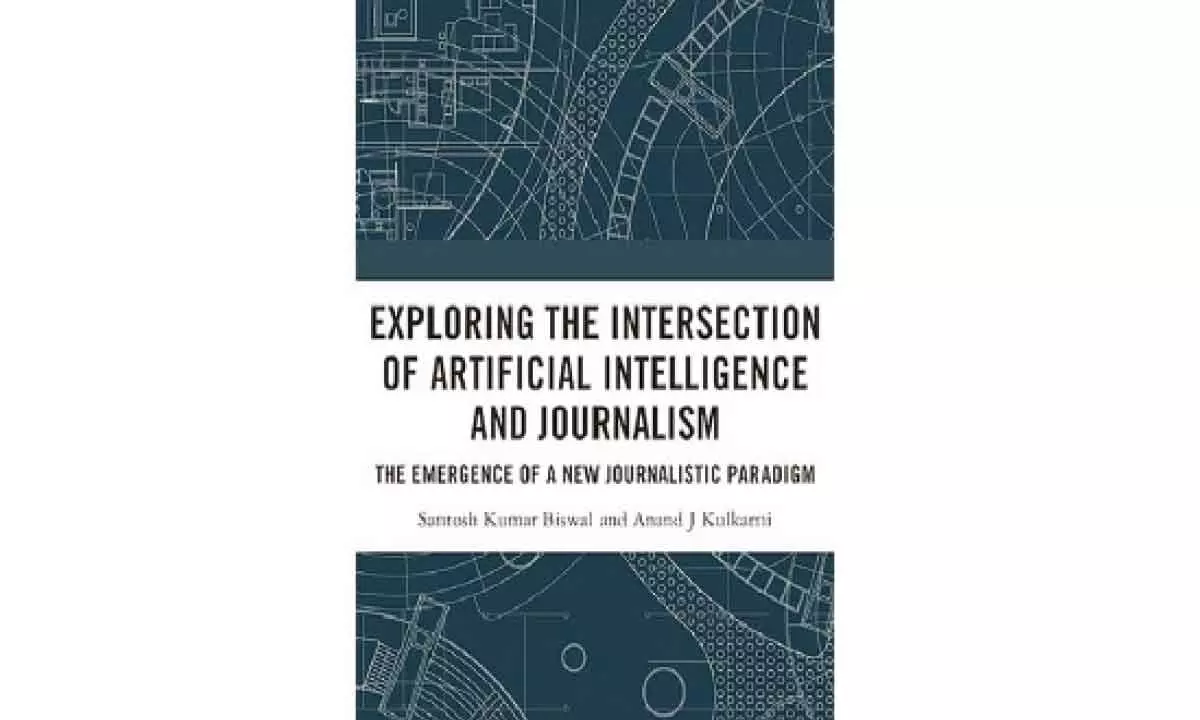New book explores AI's impact on journalism
Authored jointly by Santosh Kumar Biswal, Anand J Kulkarni, this book has traversed through the dynamic landscape of tech advancements and their implications for media
image for illustrative purpose

It was the year 2018 when the authors had planned to write the book, authored jointly by Santosh Kumar Biswal and Anand J Kulkarni, which has been published by Routledge.
The authors heard about the world’s first artificial intelligence (AI) news anchor. The Chinese state news agency Xinhua could make it possible. News about the use of AI in the press was everywhere.
The book ‘Exploring the Intersection of Artificial Intelligence and Journalism: The Emergence of a New Journalistic Paradigm’ explores the role of AI in journalism.
It traces the origins, growth and development of the media and communications industry in a globalized world and discusses the impact of technologies such as augmented reality, virtual reality and augmented reality that have helped drive the communications revolution worldwide. It also looks at AI in breaking news and citizen journalism, and analyzes the socio-cultural effects of artificial intelligence-based journalism and the resulting ethical issues.
Talking to Bizz Buzz, Dr Santosh Kumar Biswal said, “As an important contribution, this book will be invaluable to students and scholars of media studies, communication studies, journalism, social media, technology studies, and digital humanities. It is also useful for media professionals.”
The book comprises thirteen chapters, covering several aspects of journalism in the prism of AI. Chapter-I traces the journey of journalism from the age of stone carving to the age of AI, and ChatGPT was worthy of discussion. Regardless of the form of journalism, openness and trust remain key factors in building credibility.
Chapter-II looks at the basics of natural intelligence and AI and some visible applications of artificial intelligence in everyday operations.
Chapter-III makes a serious attempt to retrace the steps of the role of communication technology and the communication revolution in the journalistic space.
Chapter-IV attempts to revisit certain selected theories - uses and gratifications theory, gate theory, propaganda theory, political economy theory, cultivation theory, agenda theory, spiral of silence theory, technological determinism, domestication theory, evolutionary communication theory and feminism media theory in the light of the use of AI in the field of journalism.
Chapter-V seeks to address AI-based development journalism that leads to basic structural reforms rather than policy advocacy and institutional reforms. However, the use of AI technologies in the evolving journalism stories of the global north and global south created cracks in the media image. It needs communication policy, good governance and management of news agencies in the right place.
Chapter-VI describes the second level of the digital divide, which emerged from the dichotomy of global north and global south. This dichotomy has exposed a newer woe in the news industry ecosystem. Furthermore, revealing the difference between AI-haves and AI-have nots opened a can of worms. If ChatGPT falls into the press, the technological dichotomy can exacerbate the ChatGPT-haves and ChatGPT-have nots syndrome in the interests of the profession.
Chapter-VII highlights the origins, nature and development of data journalism. Chapter-VIII tries to deal with the applications of artificial intelligence in the practice of data journalism in newsrooms. The ways of using different tools of artificial intelligence in data journalism in the light of new journalistic practices are described.
Chapter-IX seeks to highlight the use of AI tools in creating a space for citizen journalism. It revisit s research on AI and various forms of citizen journalism. Chapter-X deals with the comparative perspectives of the use of AI tools in the space of citizen journalism.
Chapter-XI highlights the mediating role of journalism in understanding the socio-cultural effects of artificial intelligence in society. Chapter-XII argues that artificial intelligence's promotion of literacy has apparently become a rallying cry. Transforming journalism through the right use of AI tools was the key. Chapter-XIII questions the imagination of inclusive journalism and how ethical news reporting has become a distant dream.
“The fear of not maintaining technological equality in relation to social development and hygiene of journalistic applications is a slope that requires due consideration”, asserts Prof Anand J Kulkarni.
The authors have coined new concepts like AI digital divide, AI-haves and AI-have nots; ChatGPT-haves and ChatGPT-have nots; vernacularisation and domestication of AI; second level of digital divide between the global north and global south.

